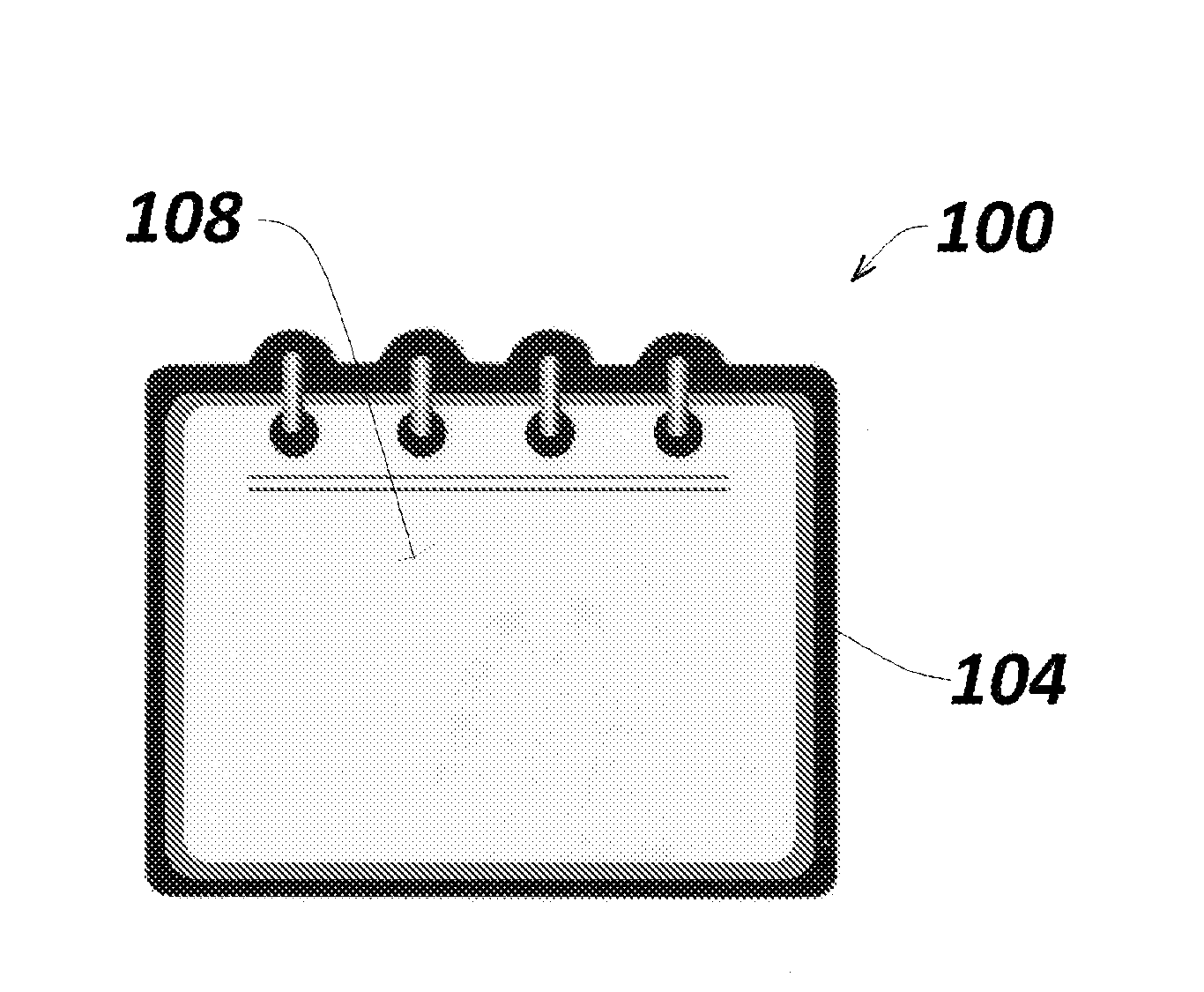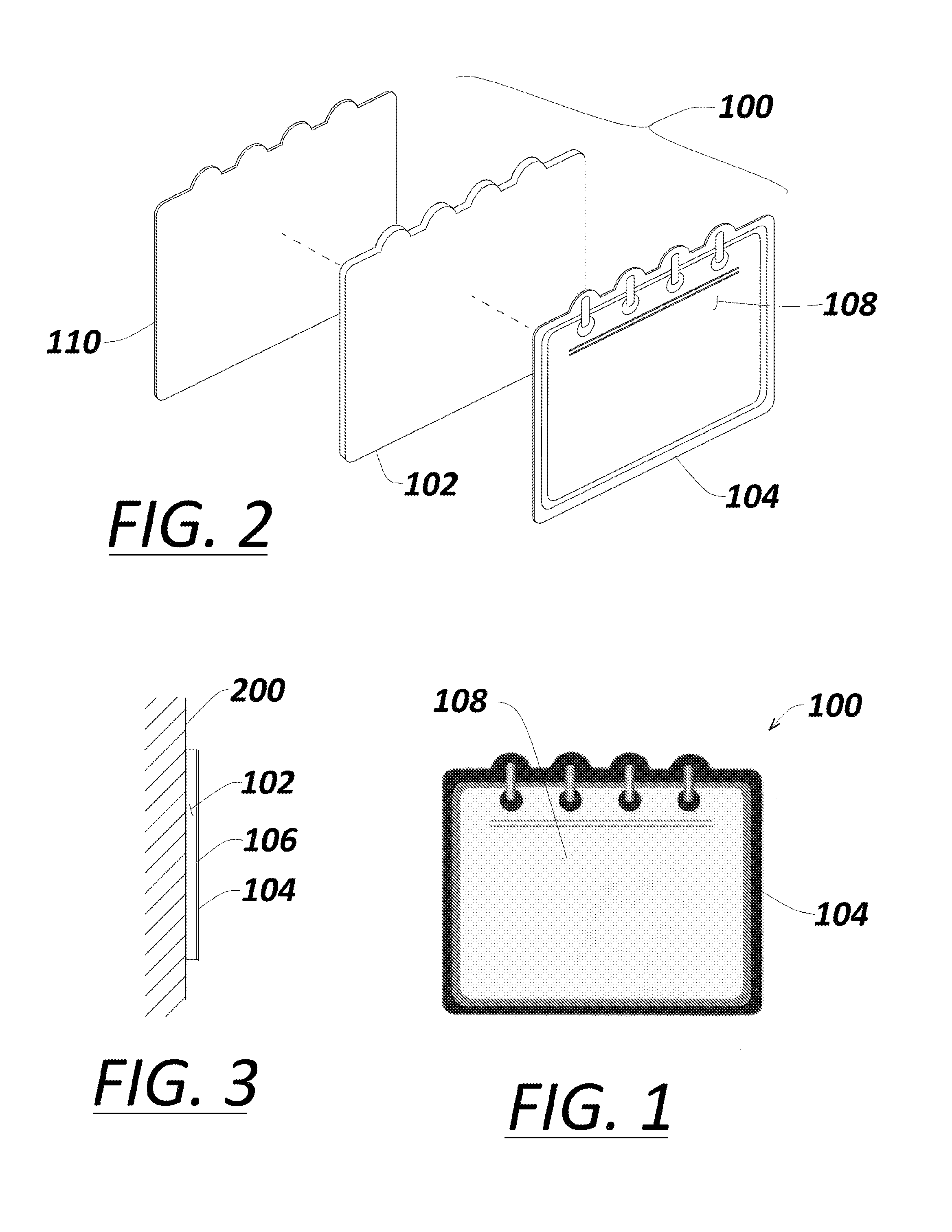Adhesive notepad
a notepad and adhesive technology, applied in the field of notepads, can solve the problems of high manufacturing cost, lack of portability, heaviness, etc., and achieve the effect of reducing the risk of damage to the installation, reducing the cost of manufacture, and reducing the service life of the devi
- Summary
- Abstract
- Description
- Claims
- Application Information
AI Technical Summary
Benefits of technology
Problems solved by technology
Method used
Image
Examples
Embodiment Construction
[0015]An adhesive-backed notepad 100 exemplary of the invention is shown in FIGS. 1-3. The pad comprises an adhesive layer 102, a face layer 104, and a backing sheet 110. The notepad is shown in FIG. 3 with its backing sheet removed and its adhesive layer adhered to an arbitrary vertical surface 200.
[0016]As seen best in FIG. 1, the note pad is shaped to emulate a bound notebook. The graphics 108 on the face layer emulate the image of the notebook to make obvious at first glance that the device is intended for having notes written thereon.
[0017]The adhesive layer is preferably made of a homogenous oil-enhanced thermoplastic rubber polymer material (TPR). The preferred material is further described below, but a myriad of similar materials may be substituted therefore, so long as those provide equivalent adherence and removal performance. The face layer is permanently bound to the adhesive layer, preferably by an oil-based adhesive coating 106 there-between.
[0018]The backing sheet is ...
PUM
 Login to View More
Login to View More Abstract
Description
Claims
Application Information
 Login to View More
Login to View More - R&D
- Intellectual Property
- Life Sciences
- Materials
- Tech Scout
- Unparalleled Data Quality
- Higher Quality Content
- 60% Fewer Hallucinations
Browse by: Latest US Patents, China's latest patents, Technical Efficacy Thesaurus, Application Domain, Technology Topic, Popular Technical Reports.
© 2025 PatSnap. All rights reserved.Legal|Privacy policy|Modern Slavery Act Transparency Statement|Sitemap|About US| Contact US: help@patsnap.com


